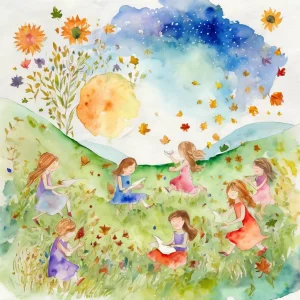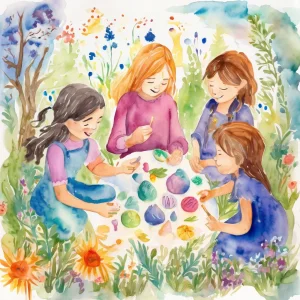Activity
Similar Activities
Picnic Adventure: Pretend Cooking Play for Toddlers
Children’s Age: 2–3 years
Activity Duration: 10 – 30 minutes
An imaginative activity where children (ages 2-3) engage in pretend cooking during a picnic adventure.
Activity Duration: 10 – 30 minutes
Whispers of Nature: Eco-Puzzle Challenge
Children’s Age: 8–12 years
Activity Duration: 20 minutes
The "Eco-Puzzle Challenge" activity is a fun and educational way to promote empathy, play skills, and ecological awareness in children aged 8 to 12. Children work in small teams to…
Activity Duration: 20 minutes
Whispers of the Seasons: Seasonal Collage Exploration
Children’s Age: 5–6 years
Activity Duration: 10 minutes
Engaging activity where children create collages representing different seasons.
Activity Duration: 10 minutes
Engaging Holiday Memory Game for Kids
Children’s Age: 2–6 years
Activity Duration: 10 minutes
Let's play the Holiday Memory Game! You and your child can enjoy this fun activity together without needing any materials. Find a cozy spot, sit down, and get ready to play.
Sta…
Activity Duration: 10 minutes
Enchanted Digital Nature Scavenger Hunt: A Journey Through Technology and Nature
Children’s Age: 12–16 years
Activity Duration: 30 – 40 minutes
The Digital Nature Scavenger Hunt is a engaging activity tailored for children aged 12 to 16, promoting language development, communication skills, empathy, and computer literacy. …
Activity Duration: 30 – 40 minutes
Eco-Tech Dance Party: Nature's Rhythms and Tech
Children’s Age: 6–10 years
Activity Duration: 25 minutes
The "Eco-Tech Dance Party" activity merges technology, dance, and eco-awareness for an engaging experience. Ideal for children, this activity promotes moral growth, language develo…
Activity Duration: 25 minutes
Nature-Inspired Playdough Sculpting: Creative Nature Explorations
Children’s Age: 3–4 years
Activity Duration: 5 – 15 minutes
Children will enjoy a nature-inspired playdough sculpting activity designed to boost creativity, fine motor skills, and communication. Simply gather homemade playdough, nature item…
Activity Duration: 5 – 15 minutes
Holiday Sensory Bottle Activity: Sparkling Winter Wonderland
Children’s Age: 3 – 6 months
Activity Duration: 5 minutes
Engage babies aged 3 to 6 months in a holiday sensory bottle activity designed to stimulate their senses and support language development. Gather simple materials like a plastic bo…
Activity Duration: 5 minutes
Cultural Collage Scavenger Hunt: Global Discovery Journey
Children’s Age: 12–16 years
Activity Duration: 30 – 50 minutes
Engage children in the "Cultural Collage Scavenger Hunt," a fun and educational activity promoting cognitive development and empathy through exploring diverse cultures. Set up work…
Activity Duration: 30 – 50 minutes
Around the World Postcard Adventure: Global Tales
Children’s Age: 3–6 years
Activity Duration: 20 minutes
Embark on the "Around the World Postcard Adventure" to explore diverse countries and cultures through creative writing and art! Gather postcards, art supplies, and books about diff…
Activity Duration: 20 minutes
Holiday Dance Party Adventure: Dance Delightful Jamboree
Children’s Age: 3–4 years
Activity Duration: 5 – 20 minutes
Join the Holiday Dance Party Adventure tailored for children aged 36 to 48 months! This engaging activity combines festive music and movement to boost language development skills i…
Activity Duration: 5 – 20 minutes



























